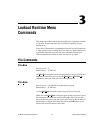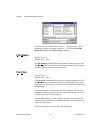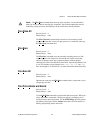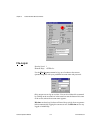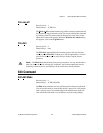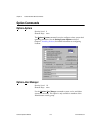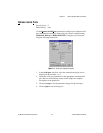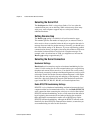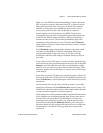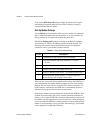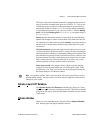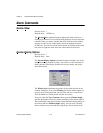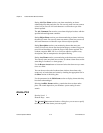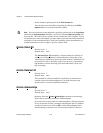Chapter 3 Lookout Runtime Menu Commands
© National Instruments Corporation 3-9 Lookout Operator’s Manual
When you select RTS/CTS hardware handshaking, Lookout controls the
RTS, or request-to-send pin, and monitors the CTS, or clear-to-send pin,
during data transmission (pins 4 and 5 on a 25-pin RS-232 connector).
Therefore, you must have at least the RTS pin (pin 4) wired straight
through
on your RS-232 cable. The CTS pin (pin 5) is optional.
Lookout initiates a serial transmission on an RTS/CTS port by first
asserting RTS to key the radio. Lookout then begins monitoring the state
of the CTS pin. When the radio transmitter is fully keyed and ready to
transmit, the radio asserts CTS and Lookout immediately begins data
transmission. If the radio does not assert CTS within the CTS timeout
setting (default is 100 ms), Lookout assumes the radio is ready to transmit
and transmits anyway.
The CTS timeout setting is the maximum amount of time that Lookout
waits after asserting RTS for CTS before transmitting. Most radios
typically take between 10 and 80 ms to key up. Consult your radio
specifications and DIP switch settings to determine the key-up delay on
your radio.
If your radio can assert CTS when it is ready to transmit, add about 50 ms
to the radio key-up delay specification and use this total value for the CTS
timeout. If your radio does not assert CTS, you should begin by adding
about 20 ms to your radio key-up time. Then increase this value in 10 ms
increments until the remote radio begins to correctly receive the first bytes
of the message.
Some radios may assert CTS before they are actually ready to transmit. In
this case, disconnect the CTS line (pin 5 on a 25-pin RS232 connector) and
set the CTS timeout to a value high enough to let the radio fully key before
transmission.
After it transmits the last byte of data, Lookout continues to assert RTS,
keeping the radio keyed until the RTS delay off time period expires. You
should set this value to the default of 0 ms, so that Lookout unkeys the radio
as soon as possible to prepare to receive the response.
When unkeyed, most radios generate an audible squelch tail that the remote
device might decode as unexpected garbage bytes. Some remote devices
reject the entire message instead of just decoding the valid data and
ignoring the extra garbage bytes. In this case, keep the radio keyed for
several milliseconds using the RTS delay off setting. This time period
delays the squelch tail long enough for the remote device to recognize the
last data frame as valid before receiving garbage bytes caused by the
squelch tail.



